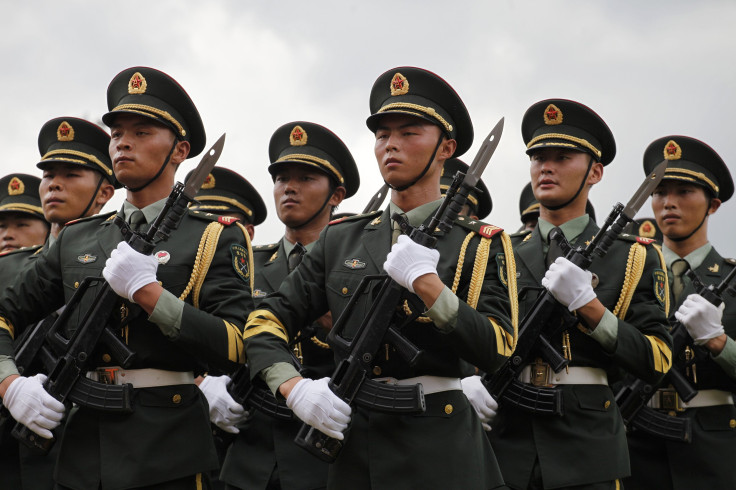China To Engage In 'Six Inevitable Wars' Involving U.S., Japan, India And More, According To Pro-Government Chinese Newspaper

China's announcement last weekend of an Air Defense Identification Zone, which includes disputed areas of the East China Sea, has ratcheted up tensions between China and her neighbors, leading some to believe war is imminent.
The new air defense area includes the airspace above the hotly disputed cluster of tiny islands known as the Diaoyu to China and the Senkaku to the Japanese. International reaction to the ADIZ, particularly from Japan and its ally the U.S., has been uniformly defiant. In addition to official statements from Japanese Foreign Minister Fumio Kishida and U.S. Secretary of Defense Chuck Hagel, Reuters reported Tuesday that two U.S. military aircraft have flown around the disputed islands in direct defiance of China’s ADIZ.
“We have conducted operations in the area of the Senkakus,” spokesman Col. Steve Warren said, using the Japanese name for the islands. In addition to declaring the zone’s wide boundaries, Chinese military forces announced that all air travel in the designated ADIZ must be reported to avoid “emergency defensive measures in response.” The U.S. did the flyover without addressing the demands made by China. “We have continued to follow our normal procedures, which include not filing flight plans, not radioing ahead and not registering our frequencies,” Warren continued.
The new ADIZ has brought added tension to one of China’s several current territorial disputes. As pointed out in Shanghai-based news-blog, The Shanghaiist.com, earlier this summer, a particularly strident pro-government local newspaper, Weweipo, published a war-mongering article describing the “Six Wars China Is Sure to Fight In the Next 50 Years.” The article essentially predicts that most of China’s current border disputes will eventually lead to war.
Over the next 50 years, the article expects China to be engaged in war over the following issues:
1. Taiwanese unification (2020-2025)
While China and Taiwan currently have fairly peaceful relations, the mainland continues to strive for “unification.”
2. South China Sea islands (2025-2030)
According to a translation of the original article, as published by StratRisk.com, following the inevitable "return" of Taiwan, “South East Asian countries” will “already be shivering.” This momentum will be the driving force behind negotiations to “reconquer” South China Sea islands like the Spratlys, which neighboring governments like Taiwan, Malaysia, the Philippines and Vietnam all lay claim to.
3. “Southern Tibet" (2035-2040)
Though China and India share a long border along China’s southwest region, a Himalayan area claimed as "southern Tibet" is the main point of contention between the two huge nations. The article suggests that “the best strategy for China is to incite the disintegration of India” by dividing the nation into several smaller countries so “India will have no power to cope with China."
4. East China Sea islands (2040-2045)
Unsurprisingly, the newspaper reaffirms that the East China Sea island groups of Diaoyu and Ryukyu, known in Japan as Senkaku and Okinawa, belong to China. While the article says the conflict won’t take place until 2040, other scholars have estimated that a war between China and Japan, and likely the U.S., could happen sooner.
5. “Outer” Mongolia (2045-2050)
“If Outer Mongolia can return to China peacefully, it is the best result, of course; but if China meets foreign intervention or resistance, China should be prepared to take military action,” the article reads.
6. “Recover the territory seized by Russia” (2055-2060)
The article recognizes the current good relations between China and Russia but insists that “China never forgets the lands lost to Russia” in past centuries, adding that “when the chance comes, China will take back the lands.”
The article is predictably confident that all wars would be won by the Chinese side, and Russia is no different: “After the victories of previous five wars, it is time to make Russians pay the price.”
© Copyright IBTimes 2024. All rights reserved.





















